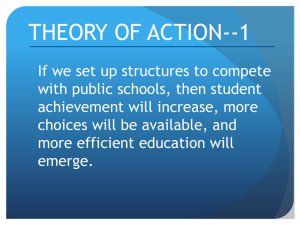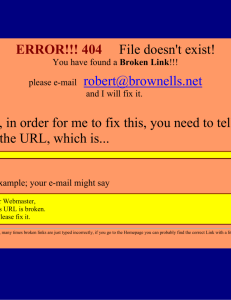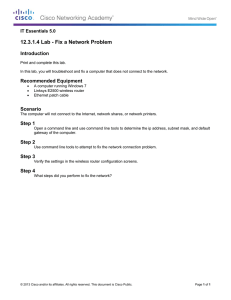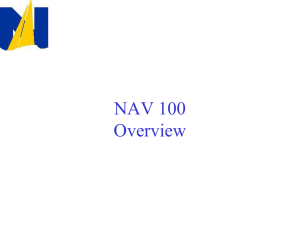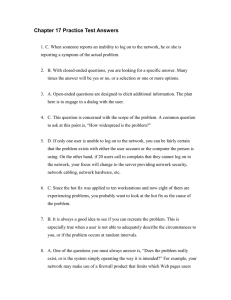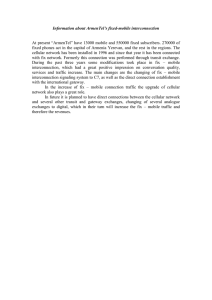Software Support & Maintenance (Chapter 12)
advertisement
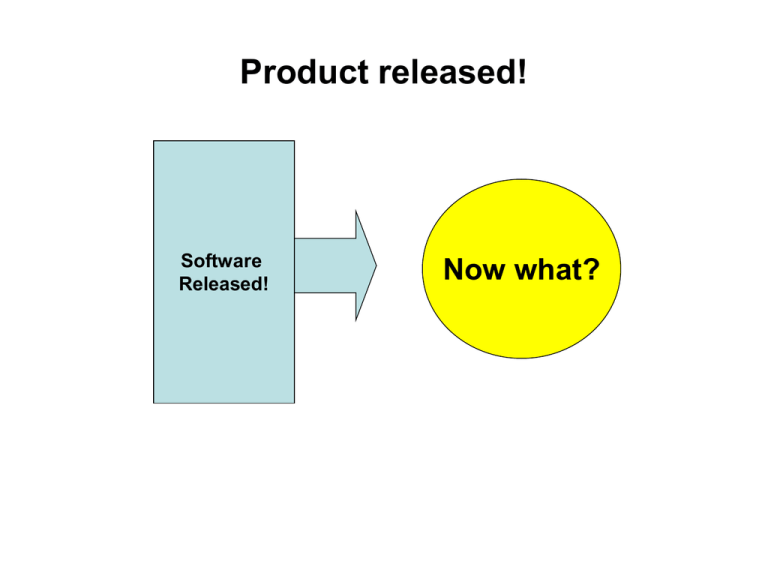
Product released! Software Released! Now what? Customer/User Support • Post software product-release support – Non-defect support • Usage questions-answers • General help (install, recovery, etc.) • Additional and supplemental functions (future releases) – Defect support • • • • Report and track failure and defect Recovery from failure Work around Fixes releases Defect Support • While both non-defect and defect support are important, defect support requires some sophistication: – Project the # of problems and problem arrival rate – Estimate and plan the needed support resources – Educate and build the defect support team – Defect reporting and tracking – Defect identification, fix, and release -During the period right after release, many problems are discovered and reported. -The amount of problems discovered eventually decreases; at the same time the nature of the problem discovered becomes more difficult to diagnose. Problems discovered & reported Time (after software release) Problem Arrival Curve Problem Discovery Curve • Traditionally follow a Raleigh Curve: – A special case of Weibull distribution : f(t) = (m/t) (t/c)m e (-t/c)m [ note : m is a superscript to (-t/c) ] when m = 2, we have Rayleigh curve f(t) = (2/t) (t/c)2 e(-t/c)2 Customer Support • Software support is not free – Most charge an annual fee (e.g. 18% of product) • Software support is not forever – Most product goes through a number of releases – Each product release is only supported for a limited number of years – Customers/users are moved from back-level software to the current release as soon as possible • Usually support no more than 2 back-levels of a software Product Support Life cycle Non-Defect support User/customer migration Defect support Reduced Defect support (only severe defects) Plan & Prepare for Support/Maintenance Product Release Announcement of new release or replacement software Product withdrawal Product “sun-setting” • Stop any product’s additional feature and enhancement • Fix only the high severity problems • Announce new replacement product • Encourage new and existing customers to move to new product • Notify all old users on the old product of the planned termination date • Provide names of other vendors who are willing to support the old product to the customers who chooses to stay • Terminate the customer product and withdraw the product from market Tiered Customer Support • Organize the support group into tiers: May be One tier – A direct customer contact tier to accept problems, prioritize the problems, record problem, solve the “easy” problems, and manage the problemresolution cycle. – A higher tier pf specialized resource that sometimes talk to customers to resolve more difficult problems with work arounds – A tier of experts that can fix and rebuild the code Customers/ users . . . . Online Support Telephone Call FAQ Customer Service/ Support Reps. Problem/ Fix information Technical Problem / Fix Analysts Customers/ users Direct Customer Support Problem Fixes & Delivery (one tier) (another tier) A Sample Service and Support Organization Problem Fixes • A key parameter in keeping the customers satisfied is to turn the problem fixes around within some reasonable time-frame. • This requires an understanding and a “contract” of service terms. • The contract on fix response time is in turn dependent on the types of problem based on some “prioritization” scheme Priority Level Problem Category Fix Response Time 1 Severe functional problem with no work-around As soon as possible 2 Severe functional problem but has work-around 1 – 2 weeks 3 Functional problem that has a workaround 3 – 4 weeks 4 Nice to have or to change Next product release or earlier Sample Problem Priority Levels Installing Fixes • Customers do not always install a fix release provided by the software support group. – Choose and pick the fixes they want – Modified code and can not apply the generic fix release – Stay on some past release because it “finally” works • Need to explain the potential serious problem – Fix Release related to other fix releases that customer care about in product fix situation. (see next slide) – A released fix may have reworked over a previous “emergency’ fix code area (see a later slide) Related Financial Application Update/Fix maintenance Release 2 Update/Fix maintenance Release 1 Update/Fix maintenance Release 3 Update/Fix maintenance Release 1 Related Distribution Application Base Manufacturing Application Update/Fix maintenance Release 4 Update/Fix Update/Fix maintenance Release 3 maintenance Update/Fix Release 2 maintenance Release 1 6 months 12 months 18 months 24 months Multiple-Product Fix Releases that must be applied together to keep all the functions and data in synch Statement 1 Statement 2 Statement 3 Statement 4 Statement 5 Statement 6 Statement 7 Statement 8 Statement 9 . . Fix Release n . . Statement 3’ Statement 4’ Statement 5’ Statement 6’ . . . Fix 1 . . Statement 3’’ Statement 4’’ Statement 6’’ . Statement 11’ . . . Statement 2’ Statement 3” (del) Statement 5’’ Statement 6’’’ . . . Fix 3 Fix 2 (re-tooled) emergency fix Fix release (n+1), containing 3 accumulated fixes Fix Overlay Problem Fix Install Users and customers should be encouraged to install the latest fix release and install the fix releases in sequence. Sometimes they need a better explanation than “it is our policy” Change Control in Support & Maintenance • All problems reported need to be tracked through successful problem-resolution with the customers. • A part of this control is to ensure that all changes, for fixes and for enhancements, are not arbitrary and capricious. • Change Control is the mechanism used, just as in software development prior to release, to ensure that all changes are managed through – Change control process – Documented changes (change control form as an aid) – Change control committee Change Control Process and Committee • Manages the changes via a work flow: – – – – Origination of change request Approval of change request Monitoring the changes being made Closing the completed change • Needs resource to ensure the control process: – Change control board or committee – Automated workflow tool (using a change control form) Change Request # :_____________ Requestor Name:_______________ Requestor Priority: High, Medium, Low Request Date:_____________ Request Status: Accepted-Date:_______________ Rejected-Date:_______________ Processing Start-Date :________ Completion-Date:_____________ Brief Change Request Description:__________________________________ ________________________________________________________________ ________________________________________________________________ ________________________________________________________________ Areas Impacted by the Change Request :______________________________ _________________________________________________________________ _________________________________________________________________ _________________________________________________________________ Estimated Effort: ___________ Inclusion in Maintenance Rel.#: ___________ Sample Maintenance Change Request Form
